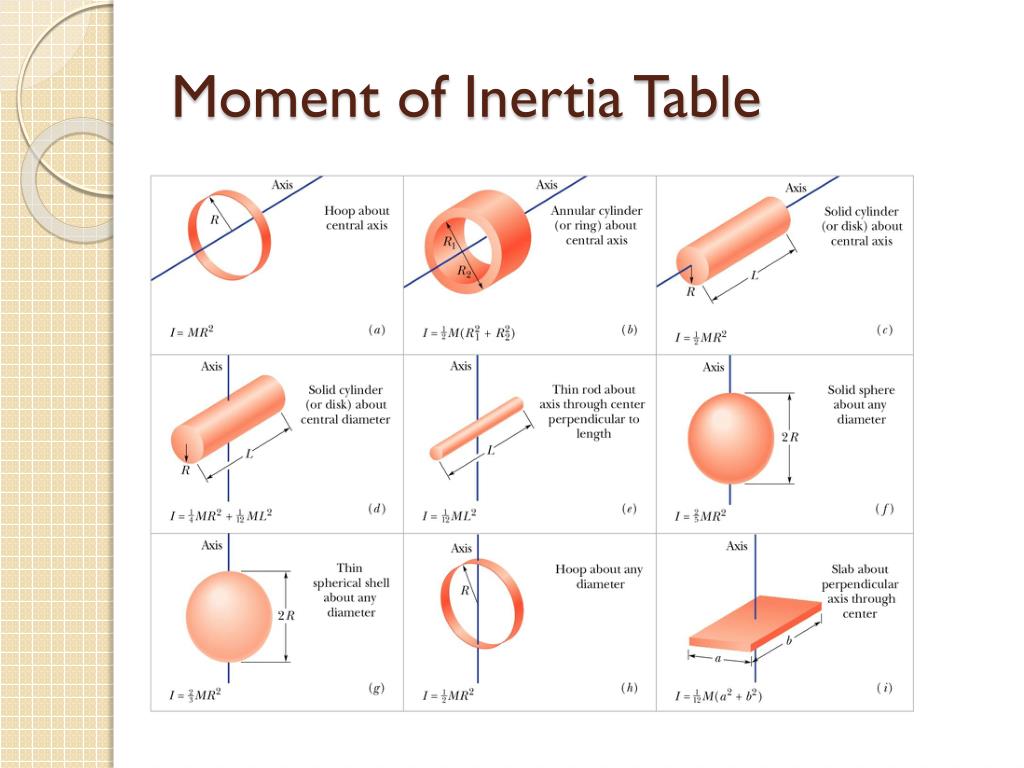


When collecting the personal information, the Company makes sure to inform the user in advance and request for the user’s approval.
#MOMENT OF INERTIA VERIFICATION#
In the process of the sign-up for membership or the use of the service, the Company is collecting the minimum amount of personal information required to provide the service through a separate application or program as follows: Processing Personal Information Required: email, ID, password, name, mobile number, country, company name, position, service use history Name, email, mobile number, encrypted user verification value (CI), duplicate information (DI) Required: name, company name, country, mobile number, company email, department, position, contents of inquiries The minimum amount of personal information required for the provision of the service is being collected. Collection of Personal Information Purpose of Processing Personal Information Through the rectangular section below, one can check how the second moment of area varies according to the reference axis.ġ. Moving the reference axis from the centroid to the x-axis in order to obtain a generalized expression of the second moment of area according to the reference axis is called the parallel-axis theorem. It can be seen from the above derivation process that the value of the moment of inertia varies depending on the reference axis. The moment of inertia is denoted as ‘I’ when the centroid of area is the reference axis, and it is denoted as I x when the x-axis is the reference axis. Furthermore, since the cross-sectional area ‘A’ and ‘r2’ are always positive, the moment of inertia becomes the smallest value when the reference axis is the centroid of area. Since the first moment of area ‘Q G’, calculated as the integral product of ‘y n’ and the infinitesimal area ‘dA’, is 0, the moment of inertia relative to the x-axis can be calculated as the sum of the moment of inertia ‘I’ and the product of ‘r 2’ and cross-sectional area ‘A’. The distance from the reference axis x to the centroid of area is ‘r’, and the distance from the centroid of area to the n-infinitesimal elements can be subdivided into ‘y n’.

The second moment of area of an arbitrary section with the x-axis as the reference axis is calculated as follows. The formula for calculating the second moment of area derived through the above process can be generalized through the example below. When a material with a large modulus of elasticity or a cross-section with a large second moment of area is used, the flexural rigidity increases, and when the flexural rigidity increases, not only the ability to resist bending increases, but also decreases the deflection of the structure because the deflection/deflection angle and second moment of area are inversely proportional.

Through this formula, it can be known that the elastic modulus and the shape of a member, which are intrinsic physical properties of structural members, are important factors that determine the strength of structures. EI is used as a standard to measure the level at which a structural member can resist bending. The formula above is summarized for curvature and moment as follows: The curvature κ is proportional to the moment and inversely proportional to the flexural rigidity EI. Since the moment of inertia is the product of the length squared and the cross-sectional area, the unit is expressed as length to the fourth power. If the formula obtained above is substituted with the stress calculation formula of a linear elastic material, it is expressed as follows: The term of the sum of the product of y squared and the cross-sectional area is called the moment of inertia, and is denoted as ‘I’.


 0 kommentar(er)
0 kommentar(er)
